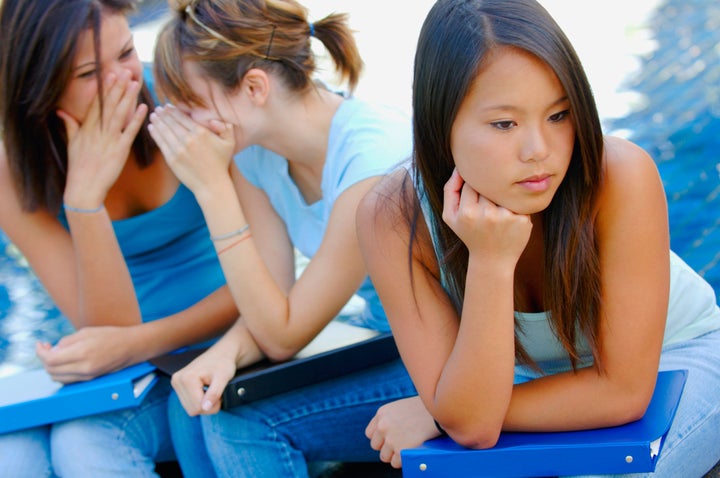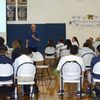
Let's get in before the bullying starts. If that sounds obvious, I'm not talking about just educating children about the damage that bullying causes -- although those teachings have much merit. Rather, I'm suggesting we educate children on the very basics of human relationships -- the stage before thoughts of aggression and conflict and separation develop into bullying.
Because where and when does bullying begin? How does a child reach the point that they become a bully? Could the things our caregivers say and do, while well-intentioned, set the stage for bullying behavior to later surface? Child psychology has emerged in the last few generations to offer some answers, yet social cruelty among adolescents is increasing. Blame is laid at the door of home life, media, video games, peers, etc. The average American child witnesses 8,000 murders on television before they finish elementary school. Other sources say it reaches 16,000 by the time they graduate high school. We cannot control the home life, cultures, friends, media influence of the children in our school systems. Everyone has a different story, and everyone's story is complex. Pointing fingers does not resolve anything.
Let's ask this question: Why do adults bully to a much lesser extent? Have you ever had a friend call you in the morning and say, "I know who I'm going to hurt today"? Yet some of our teenagers are waking with up with a vengeance. Teens resort to bullying because it is a strategy that they believe will meet their needs: social acceptance, self-confidence, respect and security. As many adults remember from their own school days, peers often reward one another's verbal and physical aggression with increased social status and acceptance. Students who have already been victimized by bullies may resort to similar strategies to regain their sense of self-confidence -- thus, a vicious cycle.
Most adults, however, while wanting acceptance, social status and self-confidence generally have different, and more socially acceptable, means for getting these needs met. Adults have opportunities to develop greater understanding of why they have their feelings and recognize the consequences of TV violence. They have more access to books, courses, and materials that help them navigate trying situations, all of which they did not have in school. Over the years we have learned that hurting others has consequences, sometimes dire. If our children can be encouraged from an early age to communicate clearly about what's really going on for them, then they can make better choices -- where better to do this but where they spend most of their day, in schools?
Bullying and other forms of social cruelty in high schools will not end just with anti-bullying campaigns. In order to change a culture of bullying and aggression, schools must implement teachings that provide an alternative. Bullying prevention begins with encouraging students to talk about their feelings in a language that is safe and helpful. Social skills will not come from an occasional assembly or after a bullying case has gained public attention. Social and emotional education should become a learned vocabulary in day-to-day life.
We've found through our work in New York City high schools that encouraging students to communicate their feelings respectfully is not as challenging as it might seem. Students want to talk about relationships. In our classes, students write essays, journal entries, poems and self-evaluations about the subject. Having a space to discuss relationships takes this complex issue into the realm of honest discussion and awareness. One of the questions we ask students at the beginning of our course is how they would feel if made fun of by a friend in front of their peers. Many students are unable to articulate their feelings at first, saying they would "brush it off" or even "hit someone." After a few classes, however, they are able to describe their feelings more clearly as they become empowered with healthy alternatives. In a safe environment where students are encouraged to discuss their emotions and needs, aggression naturally decreases as students are better able to understand themselves and empathize with others.
The majority of schools across the country have not yet prioritized social and emotional learning or are compelled to allocate budgets elsewhere. Without emphasizing social and emotional learning, schools send the message that these skills are not necessary to academic and personal success. As a result, too many students resort to aggression as the expedient strategy to meeting their needs.
A proactive, preventative approach may sound more costly than media attention and celebrity endorsements toward anti-bullying campaigns, but a strategy based on long-term prevention will never be a waste of money.
